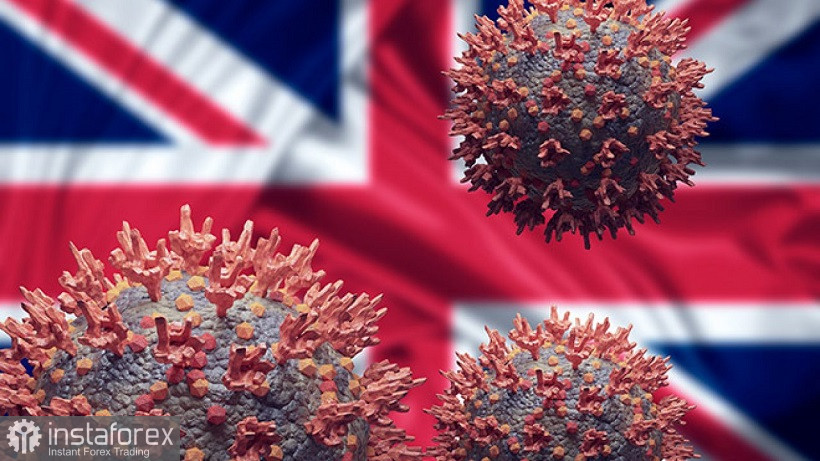The GBP/USD pair's price has been rising for several trading days, breaking through resistance levels. Since last Friday, the pound has gradually gained momentum, recovering its lost position. In less than a week, the pair has strengthened by more than 200 points, rising from the level of 1.3364 to a local high of 1.3587. But despite the upward impulse, the buyers did not dare to attack the 1.36 level. During Thursday's Asian session, the pair left from the weekly high and flatted around the level of 1.3550. The point here is not only that the dollar index has slowed down its decline: the pound is waiting for BoE's February meeting, the results of which will be announced today in the afternoon.

In general, hawkish decisions are expected from the English regulator. According to Goldman Sachs' analysts, the Central Bank will raise interest rates three times by the end of 2022. Moreover, the first increase by 25 basis points is expected today. However, not only GS currency strategists are talking about today's round of monetary policy tightening, most experts predict a rate hike to 0.5% following the February meeting. This fact is already considered in prices, and can cause strong volatility for the pair only if it does not become a reality. If the regulator still lives up to market expectations in this part, the pound will receive some support. However, the prospects for GBP/USD will depend on the rhetoric of the Bank of England regarding the fate of QE and the pace of tightening monetary policy.
The "basic" hawkish scenario assumes three rate hikes (February, May, August), the end of reinvestment under the QE program, and the announcement of the sale of securities from its balance sheet starting in autumn (October-November). If the British regulator retreats from at least one point of the "program", the pound may be under some pressure, even despite the rate increase at today's meeting.
There are many fundamental factors in favor of the hawkish scenario. First of all, this is a record inflation growth in the country. The overall consumer price index in annual terms showed a sharp growth, being at around 5.4%. This is an almost 30-year record, which is the strongest growth rate since March 1992. Core inflation showed similar dynamics. The core consumer price index increased to 4.2%.
The British labor market was not disappointing either. According to the latest data, the unemployment rate in the country fell to 4.1%, as well as the number of applications for unemployment benefits (-43 thousand). However, there is one problem - a decrease in the level of average earnings (both with bonuses and without this component). But in general, almost all of the above components of the release were in the "green zone", reflecting the recovery of the UK economy.
Following the publication of these macroeconomic reports, the market began to win back in advance the almost guaranteed increase in interest rates at the February meeting. But after passing 200 points up, traders stopped. It seems that they thought that the Bank of England give an additional impetus to the pound. Will the regulator reach the overstated bar of market expectations? These unanswered questions stopped the British currency. The GBP/USD pair fell by almost 40 points during today's Asian session. We believe that the doubts of market participants are not groundless.
As already known a new and even more infectious sub-variant of the Omicron strain, BA.2, is now actively spreading in the UK. In the first ten days of January alone, at least 400 people were infected with it. And although Omicron is more easily tolerated than Delta (this also applies to subspecies BA.2), the new strain is still dangerous for members of the risk group. In particular, 534 deaths from COVID-19 were recorded yesterday in Britain - this is the highest figure in a year. Over the past day, more than 88 thousand new cases of coronavirus were registered. It appears that cases in the UK will rise again as the BA.2 subspecies are more likely to re-infect humans, according to the findings of the British Health Safety Agency. At the same time, this virus has become much more contagious than its parent version. For example, if infected with Omicron BA.1, family members will be infected with a probability of 30%, then for BA.2, this indicator is already a third higher.
The UK authorities are currently not talking about the return of lockdowns or any additional quarantine restrictions. But the uncertainty associated with the spread of a new subspecies of coronavirus could negatively affect the decisiveness of members of the Bank of England. That is, a scenario is likely in which the regulator, on the one hand, will raise the interest rate based on the results of today's meeting, but on the other hand, will not justify the hopes placed on it by the markets in terms of a further increase in the rate. A similar alignment will be interpreted by the market against the British currency.
Therefore, the results of the BoE's February meeting may unpleasantly surprise buyers of GBP/USD, even despite the increase in interest rates. In this case, it is risky to open longs for the pair now, using the downward pullback. At the moment, it is advisable to take a wait-and-see attitude, waiting for the announcement of the result.





















